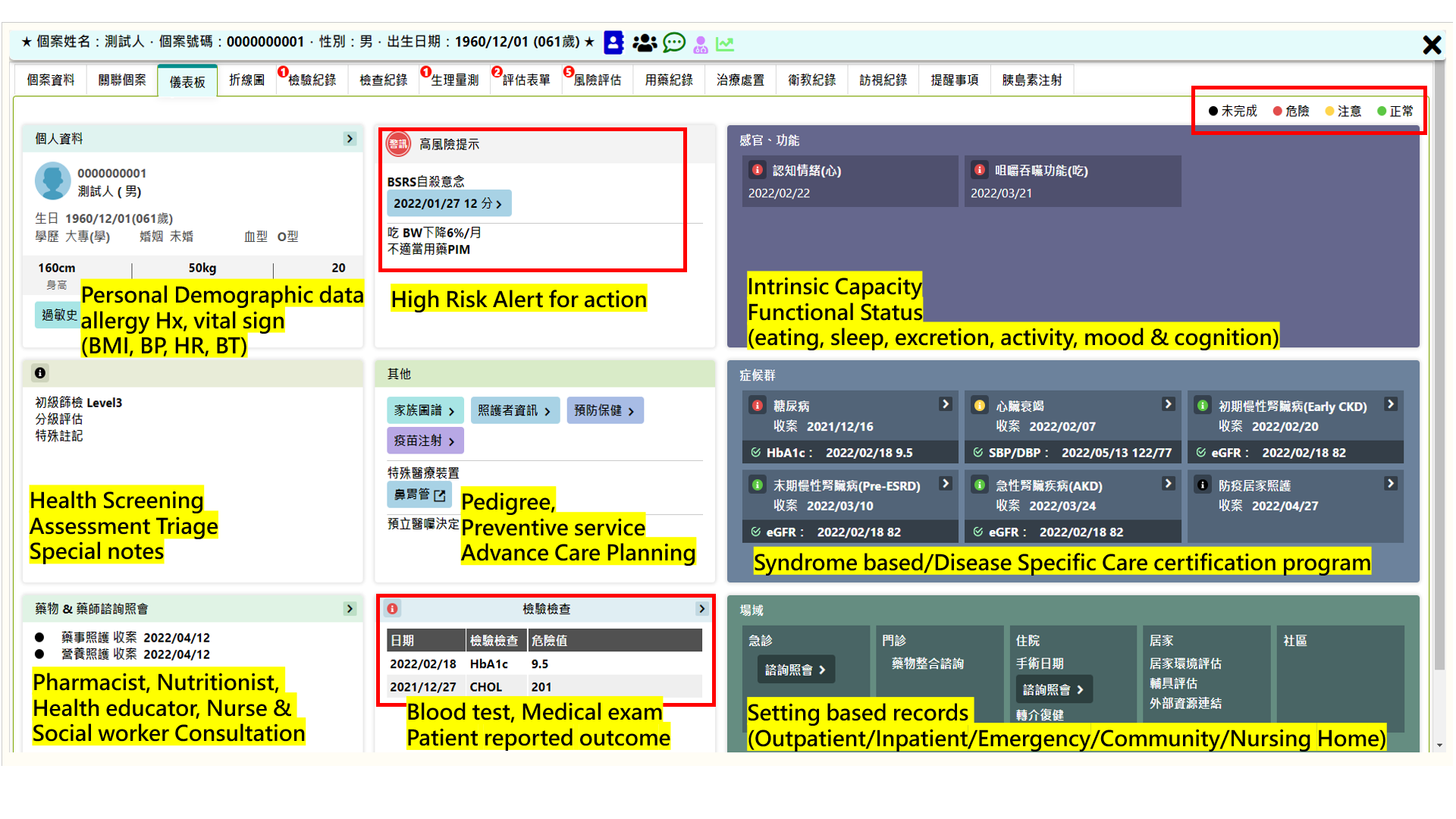Integrated Case Management System
Yi-Lin Wu, Geriatric Care Manager, Dept. of Nursing
Ming-Yi Yen, Information Engineer, Dept. of Information Technology
Older adults experience multiple comorbidities and complex care needs. To improve the quality and efficiency of care for patients and their families, an integrated case management system was established to promote an innovative and integrated smart medical-care model for older adults.
The Agile case management system provides clinical care services through the following features: (1) structured medical records, (2) physical function assessment and tracking of older adults, (3) integrated case management based on case patients’ physical functions, syndromes, and locations, (4) a smart integrated-care dashboard, (5) risk classifications and notifications for high-risk cases, and (6) home physiological measurement data concatenation. Currently, the system has provided 27 types of case services and serviced more than 16,000 case patients. The system provides more than 130 types of assessments, scales, or worksheets and enables customized functions such as authorization setting, form creation, statistical report generation, reminder setting, and test result review. The smart integrated-care dashboard provides the demographic information, medical information, medical resource usage, and high-risk and case classification management information of case patients.
For patients, the integrated case management system enhances early risk assessment and high-risk notifications to facilitate effective disease management, comorbidity prevention, and health promotion, thereby providing patients with comprehensive and continual care. For medical-care providers, the integrated medical-care information enables them to fully understand patients’ conditions; by integrating lists, care calendars, medical team messages, and case push operations, providers can save time during patient-care management and improve care efficiency and quality. The system enables efficient use of limited resources and labor to prevent diseases and reduce the burden of care providers, which provides a high-value and cost-effective care model and improves universal health care.

Figure 1. Smart integrated-care dashboard

Figure 2. Consolidated to-do list for care team members
